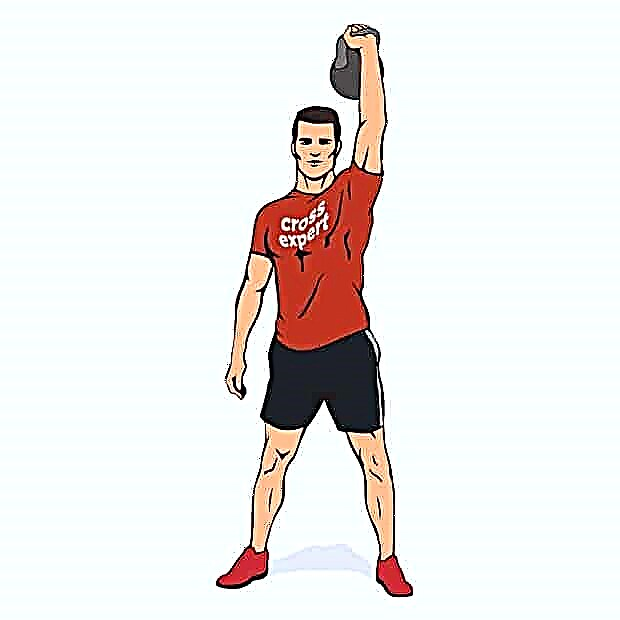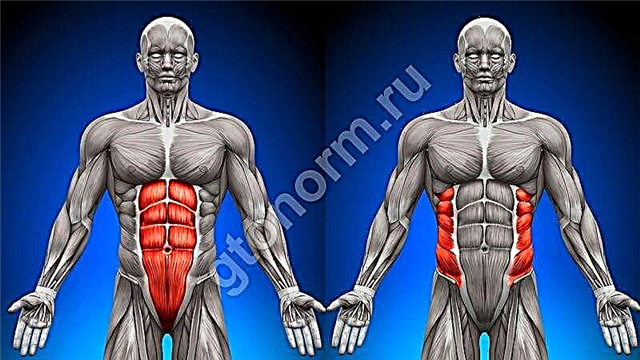Ascorbic acid is an essential organic compound necessary for maintaining the health of the body. It is a powerful antioxidant and biological coenzyme, it starts regenerative processes in cells. In its natural form, it is a white crystalline powder, odorless with a sour taste.
Ascorbic acid got its name thanks to sailors who were the first to notice that scurvy does not occur in those who eat a large amount of citrus fruits ("scorbutus" in Latin means "scurvy").
Significance for the body
Perhaps everyone knows about the need to take vitamin C in case of infection (source - Department of Clinical Pharmacology, Medical University of Vienna, Austria) or for the prevention of immunity. But besides this, ascorbic acid has many more useful properties:
- participates in the synthesis of collagen, which is the skeleton of connective tissue cells;
- strengthens the walls of blood vessels;
- increases the body's natural defenses;
- improves the condition of the skin and teeth;
- is an intracellular conductor for many nutrients;
- neutralizes the action of toxins and free radicals, contributing to their early elimination from the body;
- prevents the formation of cholesterol plaques;
- improves vision;
- activates mental activity;
- increases the resistance of vitamins to destructive factors.
Foods high in vitamin C
Ascorbic acid is not synthesized on its own, therefore, it is necessary to ensure its sufficient intake level daily with food. Vitamin C is water-soluble and therefore does not accumulate in the body and requires regular replenishment.

© alfaolga - stock.adobe.com
The table lists the TOP 15 foods rich in ascorbic acid.
Food | Content (mg / 100 g) | % of daily requirement |
| Dog-rose fruit | 650 | 722 |
| Black currant | 200 | 222 |
| Kiwi | 180 | 200 |
| Parsley | 150 | 167 |
| Bell pepper | 93 | 103 |
| Broccoli | 89 | 99 |
| Brussels sprouts | 85 | 94 |
| Cauliflower | 70 | 78 |
| Garden strawberry | 60 | 67 |
| Orange | 60 | 67 |
| Mango | 36 | 40,2 |
| Sauerkraut | 30 | 33 |
| Green pea | 25 | 28 |
| Cranberries | 15 | 17 |
| A pineapple | 11 | 12 |
Ascorbic acid is destroyed only at very high temperatures, but still it is better to use products containing it fresh. Vitamin C dissolves in water and is oxidized by oxygen, therefore its concentration decreases slightly during the cooking process, however, it is not completely destroyed. When preparing food, it is better to run vegetables already in boiling water or use steam treatment rather than prolonged frying and stewing.
Daily rate or instructions for use
The required daily intake of a vitamin depends on many factors: age, lifestyle, professional activity, level of physical activity, diet. Experts have deduced the average value of the norm for different age categories. They are presented in the table below.
| Childhood | |
| 0 to 6 months | 30 mg |
| 6 months to 1 year | 35 mg |
| 1 to 3 years old | 40 mg |
| 4 to 10 years old | 45 mg |
| 11-14 years old | 50 mg |
| 15-18 years old | 60 mg |
| Adults | |
| Over 18 years old | 60 mg |
| Pregnant women | 70 mg |
| Breastfeeding mothers | 95 mg |
An additional amount of vitamin C is required for those who suffer from nicotine or alcohol addiction, are prone to frequent colds, live in cold regions of the country, and are intensively involved in sports. In case of insufficient consumption of vitamin-containing products, it is necessary to provide them with an additional source, for example, with the help of special dietary supplements. In this case, it is recommended to coordinate the required dose with your doctor.

© iv_design - stock.adobe.com
Signs of Vitamin C Deficiency
- frequent colds;
- bleeding gums and dental problems;
- joint pain;
- dermatitis and other skin problems;
- decreased vision;
- sleep disturbance;
- bruising even with the slightest pressure on the skin;
- quick fatigue.
The most common symptom is a decrease in the protective function of the body, which leads to the fact that a person regularly "clings" to all colds and infections. This is especially pronounced in children of preschool and primary school age. The reason for the deficiency can lie both in an internal violation of the processes of assimilation of the vitamin, and in an insufficient amount of its intake, which is typical for off-season periods when there are few natural vegetables and fruits in the diet.
Indications for admission
- season of increased incidence;
- stress;
- overwork;
- regular sports;
- rehabilitation period after illness;
- frequent colds;
- poorly healing injuries;
- poisoning of the body;
- pregnancy and lactation period (in agreement with the doctor).
Excess ascorbic acid
Vitamin C is water-soluble and is excreted in the urine. Therefore, its excess does not threaten with serious consequences and violations. But there are a number of diseases in which the vitamin should be taken with caution. For example, in case of gastric ulcer and duodenal ulcer, diabetes mellitus, as well as high blood clotting, complications may occur (source - scientific journal "Toxicologal Sciences", Korean research group, Seoul National University).
Regular significant excess of the daily norm can lead to the occurrence of urolithiasis, suppression of the functions of the pancreas, as well as impaired liver function (source - Wikipedia).
Compatibility with other components
It is not recommended to consume vitamin C while taking drugs for the treatment of cancer. It is not compatible with the simultaneous administration of antacids; a time interval of 4 hours must be observed between their use.
A high concentration of ascorbic acid reduces the absorption of vitamin B12.
Aspirin, as well as choleretic drugs, contribute to the accelerated excretion of the vitamin from the body.
Vitamin C supplements reduce oxidative stress in HIV and cause a downward trend in viral load. This deserves more clinical trials, especially in HIV-infected people who cannot afford new combination therapies.
(source - scientific journal "AIDS", research of the Canadian team of scientists at the University of Toronto).
Ascorbic acid in sports
Vitamin C helps to accelerate the synthesis of proteins, which are an important building block of the muscle frame. It has been proven (source - Scandinavian Journal of Science, Medicine and Sports) that under its influence catabolic processes in muscles are reduced, muscle fibers are strengthened and their cells are not oxidized.
Ascorbic acid accelerates the synthesis of collagen, which is part of the cells of bones, cartilage and joints. Collagen scaffold maintains the cell's shape, increases its elasticity and resistance to damage.
The daily daily requirement for vitamin in athletes is 1.5 times higher than that of the average person, and is 150 mg. It may increase depending on body weight and intensity of exercise. But do not consume more than 2000 mg of ascorbic acid per day.
Release forms
Vitamin C comes in the form of pills, gummies, effervescent tablets, powders, and injections.
- The most popular form of release, familiar to everyone from childhood, is a small bright yellow round dragee. They are sold in a pharmacy and are indicated for use even by young children. The concentration of the vitamin in them is 50 mg. They should be taken with caution by persons suffering from gastrointestinal diseases.
- Gummies and tablets are also suitable for both children and adults, and can be used as a preventive measure against colds. The concentration of the vitamin in them varies from 25 to 100 mg.
- Effervescent tablets are intended for adults, they dissolve easily in water and have a concentration of 250 mg or 1000 mg.
- Powders also dissolve in water, but this happens a little more slowly. But it is they, and not the pops, that are produced for children over the age of 5 years. This form of the vitamin is absorbed much faster than tablets, since it has a high degree of absorption into the cells. In addition, the powder is not as aggressive to the stomach.
- Injections are prescribed for severe vitamin C deficiency, when a single loading dose is required. Thanks to intramuscular injection, the vitamin quickly enters the bloodstream and is carried throughout the body. The level of assimilation of this form of ascorbic acid is maximal. At the same time, the stomach is not adversely affected and acidity is not disturbed. Contraindications for injections are diabetes mellitus and thrombosis.
The best vitamins with ascorbic acid content
Name | Manufacturer | Release form | Concentration | Cost, rub) | Packing photo |
| Vitamin C | Solgar | 90 tablets | 1000 mg | 1500 | |
| Ester-C | American Health | 120 capsules | 500 mg | 2100 | |
| Vitamin C, Super Orange | Alacer, Emergen-C | 30 bags | 1000 mg | 2000 |  |
| Liquid Vitamin C, Natural Citrus Flavor | Dynamic Health Laboratories | Suspension, 473 ml | 1000 mg | 1450 | |
| California Gold Nutrition, Vitamin C | Buffered Gold C. | 60 capsules | 1000 mg | 600 | |
| Alive !, Fruit Source, Vitamin C | Nature's Way | 120 tablets | 500 mg | 1240 | |
| Vitamin Code, Raw Vitamin C | Gardenof life | 60 tablets | 500 mg | 950 | |
| Ultra C-400 | Mega food | 60 capsules | 400 mg | 1850 |









